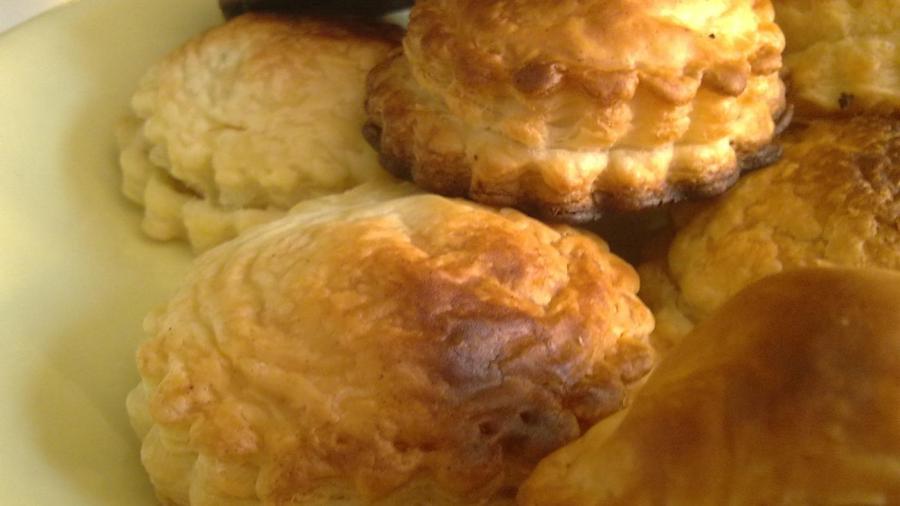What Is the Difference Between Puff Pastry and Shortcrust Pastry?

The difference between puff pastry and shortcrust pastry is that puff pastry contains more fat and requires an elaborate dough-folding technique that creates dozens of layers during baking. Shortcrust pastry is thick, hardy, and does not puff or separate into layers. It is a popular choice for tart and quiche bottoms, while delicate puff pastry is preferable for turnovers and upper pastry crusts.
According to About.com British & Irish Food expert Elaine Lemm, basic shortcrust pastry is extremely versatile and easy to make. Standard recipes call for water. For more flavor and a tender crumb, the water can be replaced with eggs.
Puff pastry turns golden brown and rises dramatically in the oven. However, it is difficult and complicated to make from scratch. Frozen puff pastry is a popular alternative. The BBC states that another option is “rough puff,” a flaky pastry with the rich, buttery flavor of puff pastry. It is quick and simple to make from scratch and does not rise while baking.
Shortcrust and puff pastry have both sweet and savory applications. Another popular dough, pate sucrée, is extremely sweet and useful only in pies, tarts and other desserts. According to the BBC, pate sucrée contains much more sugar than puff pastry and shortcrust dough. Its intense richness comes from egg yolks.





